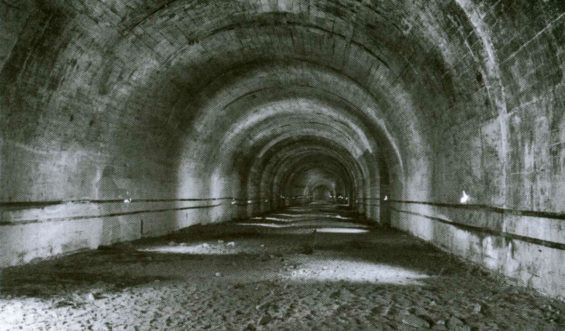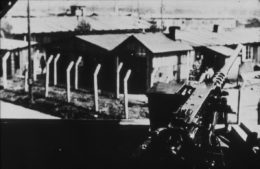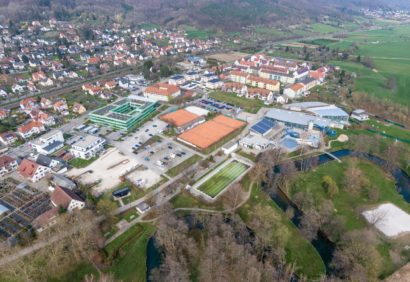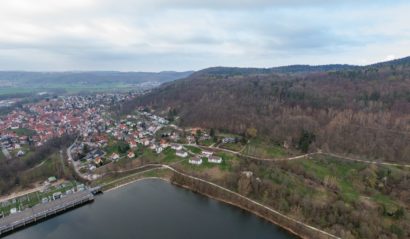Hersbruck Subcamp
May 17, 1944 – April 1945
Codenames: "Dogger," "B7"
![]()
Tunnel system in Happurg, 1987 (Staatliches Bauamt Nuremberg)
![]()
View of the subcamp Hersbruck after the liberation, 1945.
![]()
Aerial view of the camp grounds in Hersbruck, 2019 (Flossenbürg Concentration Camp Memorial / Photo: Rainer Viertlböck).
![]()
View of the Houbirg Mountain and the reservoir in Happurg, 2019 (Flossenbürg Concentration Camp Memorial / Photo: Rainer Viertlböck)
-
Prisoners
A total of around 9,000 prisoners from more than 20 countries. Two-thirds of the prisoners came from Poland, Hungary, and the Soviet Union. Among them were more than 1,300 Jews.
-
Coming from the occupied countries of southern and western Europe, mainly Italian and French nationals were imprisoned in Hersbruck. German prisoners formed a minority. At the end of February 1945 there were 5,863 prisoners in the Hersbruck subcamp.
-
Forced labor and quarters
Excavating a tunnel system in a mountain near Happurg for the planned BMW underground aircraft engine factory; railway construction; transportation of building materials; however, with the tunnel system only partially completed, production operations were not commenced with
-
In May and June 1944, the prisoners were initially quartered in the hall of an inn and in a barn in Happurg. The prisoners were forced to erect a barracks compound on the edge of Hersbruck, where they were then quartered from July 26, 1944.
-
Guards
400 men, mainly air force soldiers. Detail leaders were Emil Fügner, Heinrich Forster, Ludwig Schwarz. Foster was particularly violent, while Fügner and Schwarz undertook nothing to alleviate the catastrophic living conditions of the prisoners.
-
Death toll
Some 4,000 deaths. At times, up to 30 persons died every day. Many of those classified as unfit for work died after being transported back to Flossenbürg.
-
Disbanding of the camp / end of the war
The camp was evacuated in April 1945 and the prisoners were deported in the direction of Dachau, partly by train and partly on foot.
-
Commemoration
In 1945 a monument was erected on the remains of the crematorium. It was relocated in a simplified form to the bank of the newly built Happurg reservoir. In Schupf and Hubmersberg monuments were also erected at locations where corpses of prisoners were cremated.
-
Today a tax and revenue office, parking spaces, sports grounds and an apartment development are located on the former camp grounds. A memorial stone outside the revenue office in Hersbruck and a memorial plaque at the bricked-in tunnel entrances in Happurg are complemented by information panels. In 2016 the Flossenbürg Memorial Site opened the exhibition “Documentation Hersbruck/Happurg” at both locations.



